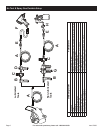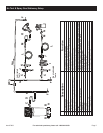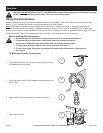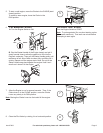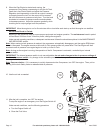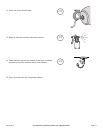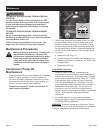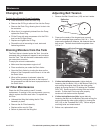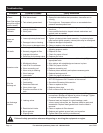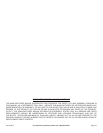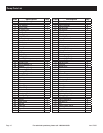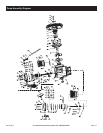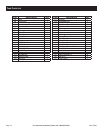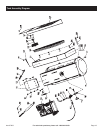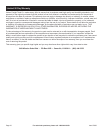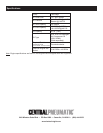
Page 14
For technical questions, please call 1-800-444 3353. Item 67853
Troubleshooting
Problem Possible Causes Likely Solutions
Engine will
not start
(Note: See engine
manual for engine
specicissues.)
COMPRESSOR SPECIFIC:
1. Pilot Valve closed.
2. Tank already pressurized.
COMPRESSOR SPECIFIC:
1. Open pilot valve before start procedure, close after unit is
running.
2. Turn engine on. Compressor will turn on as needed when
pressure reaches preset level.
Compressor
overheats
1. Incorrect lubrication or not
enough lubrication.
2. Worn parts.
1. Lubricate using recommended oil or grease according to
directions.
2. Havequaliedtechnicianinspectinternalmechanismand
replace parts as needed.
Severe air
leakage
1. Poor air outlet seal.
2. Loose cylinder/cylinder head.
3. Damaged valve or housing.
4. Dirty, worn or damaged valve.
1. Tighten or re-attach using thread seal tape.
2. Tighten cylinder/cylinder head assembly. If cylinder/cylinder
head cannot tighten properly, internal parts may be misaligned.
3. Replace damaged components.
4. Clean or replace valve assembly.
Unit stalls
1. Low engine idle.
2. Severelycloggedairlter.
3. Improper lubrication.
4. Defective pilot/unloader valve.
1. Qualiedtechnicianshouldincreaseidleto2,200±100RPMby
adjusting pressure switch.
2. Replaceairlter.
3. Check for proper oil level.
4. Replace pilot valve.
Excessive noise
1. Loosedrivepulleyorywheel.
2. Misaligned pulleys.
3. Lack of oil in crankcase.
4. Worn connecting rod.
5. Worn wrist pin bushing.
6. Worn bearings.
7. Loose belts.
1. Loose pulleys are a common cause of “knocking”. Tighten
appropriate bolts.
2. Align pulleys with straightedge and secure in place.
3. Check for proper oil level.
4. Replace connecting rod.
5. Remove piston assembly and replace necessary parts.
6. Replace bearings and oil.
7. Check for proper belt tension.
Oil in the
discharge air
1. Wrong type of oil or low-
quality oil.
2. Overheating.
3. Restricted intake air.
4. Worn piston rings.
5. Excessive moisture in the
tank.
1. Change oil. Check oil recommendations under EQUIPMENT
SET UP, Equipment Oil Fill section of this manual.
2. See above Excessive Noise section.
3. Cleanorreplaceairlter.
4. Replace piston rings.
5. Drain moisture from the tank daily.
Low discharge
pressure
1. Air leaks.
2. Leaking valves.
3. Restricted air intake.
4. Blown gaskets.
5. Slipping belts.
1. Listenforescapingair.Applysoapsolutiontoallttingsand
connections. Bubbles will appear at points of leakage. Tighten
orreplaceleakingttingsorconnections.
2. Remove head and inspect for valve breakage, weak
valves, scored valve plate, etc. Replace defective parts and
reassemble. Replace head gasket each time the head is
removed.
3. Cleanorreplaceairlterelement.
4. Replace and gaskets proven faulty on inspection.
5. Tighten Belts (See monthly maintenance.)
Follow all safety precautions whenever diagnosing or servicing the equipment or engine.



